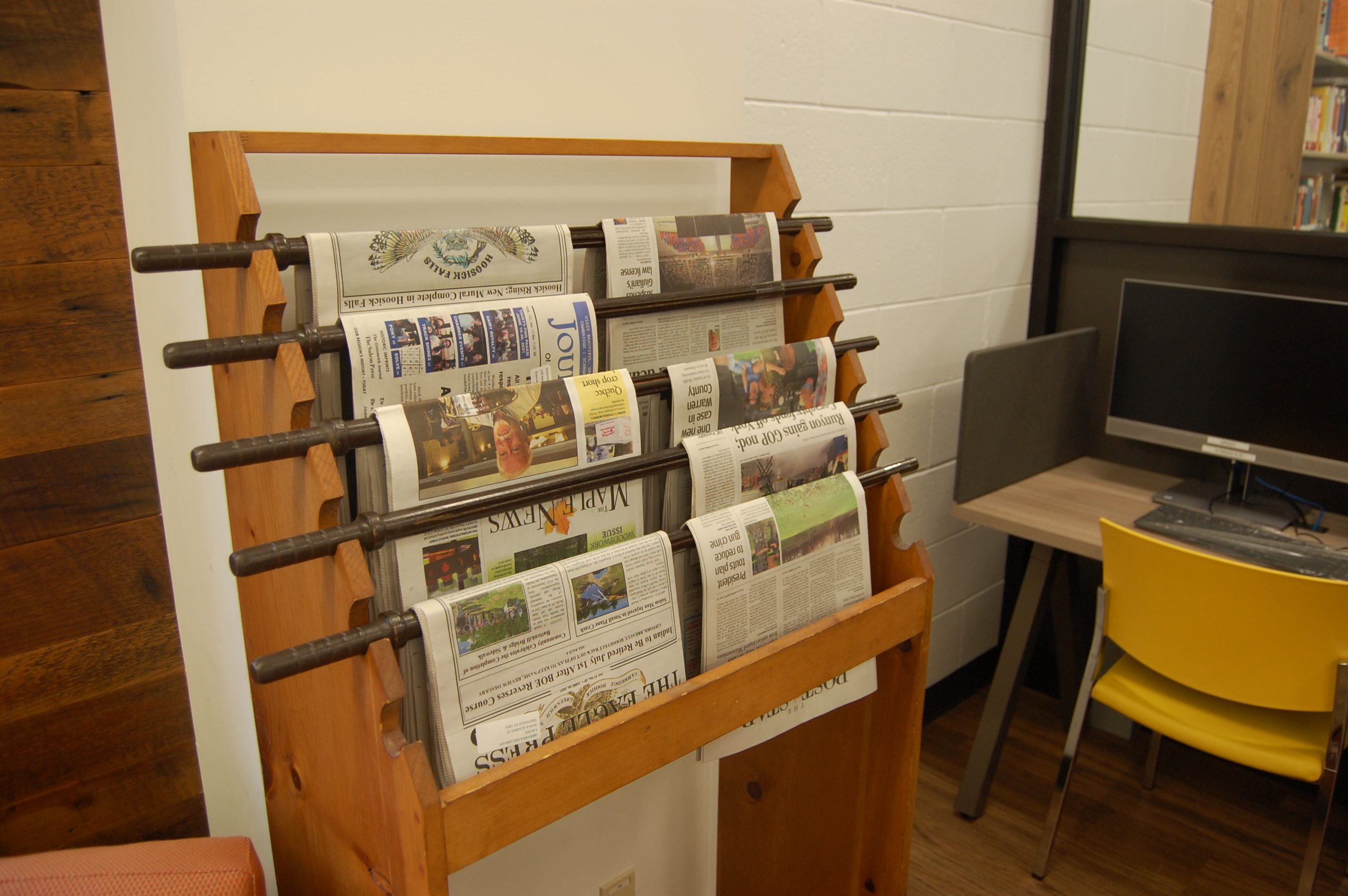By Darren Johnson
Campus News
NOTE: This was published in my other paper, the Greenwich Journal & Salem Press, a community paper in Upstate New York. I figure it’s a useful look at the different types of papers that exist in a typical small town; how they exist and if they have a future.
About a decade ago, I attempted to start a Schuylerville, N.Y., newspaper, and printed five issues. It looked like this newspaper, with similar types of stories, but was a free paper. The readers enjoyed it well enough, but I made a big miscalculation. I’d assumed local businesses would be on board, and a free paper needs advertising to survive, but they all cried poverty, and, maybe they were right, because very few of those businesses are around today. Though one could argue maybe if they did advertise more, they might have survived.
So when I took over this paper, I applied lessons learned from my previous newspaper highs and lows and came up with a model that, while modest, seems to be sustainable. The model includes real journalism to keep and grow subscriptions and newsstand sales, better layout to attract larger advertisers like banks and hospitals, stronger ties to the community and a non-partisan approach to increase trust and goodwill. I had to cut frequency from weekly to twice a month to save on printing and mailing costs, but added color and upped the page count to a consistent 32 pages to justify a $2 cover price, in line with other local papers and, in my opinion, a bargain considering the amount of content and curation involved in each and every edition of The Journal & Press.
It’s no secret newspapers everywhere are struggling, and the pandemic certainly did not help. Now, small businesses are having trouble finding workers at a rate they can afford; the problem is exacerbated by big corporate chains now paying $18+; why would someone work for a small restaurant – or hometown newspaper – for less pay and a less reliable schedule? As small business owners, we can’t expect workers to want to support our dreams.
Having worked for a number of newspapers, and having studied and taught Journalism, and having started various publications of my own over time (my college paper Campus News is approaching its 12th birthday), I think I have a good grasp on what the local newspaper landscape is like now. Here are my observations.
The Post-Star
The only daily paper that covers Washington County with any regularity, I still subscribe to it, but notice only one other Post-Star newspaper tube left in my neighborhood of about 40 homes. The paper has dropped considerably in substance and quality since it won a Pulitzer in 2009; and in various opinion pieces, the staff brags about a digital future. But, that said, their site doesn’t seem to be that well monetized, only with gimmicky network ads that pay pennies and weird paywalls, so I don’t see this paper making that great leap to becoming online-only. Add in another problem: Former staffers leave and start their own blogs, further diverting traffic from the paper’s site.
The Free Press
This is a Manchester paper that uses a bulk mail permit to saturate whole zip codes, but there’s no real news in it. They get the same press releases all the other papers get, but that’s all the Free Press publishes. They may put a press release about a school play on the cover, while I would place such a piece on page 27 (and I’d copy edit it). However, they are an ad vehicle, taking ads away from newspapers that are actually trying to live up to a mission of helping the community by analyzing and disseminating real and useful information.
The Eagle
Based in Cambridge, this paper is most similar in mission to The Journal & Press, and I have no problems with it. We all should subscribe to multiple papers because no one paper can cover everything. The Eagle comes out weekly and has a $1 cover price; I’d estimate that mostly covers the cost to print and mail. Considered a Republican paper, the Eagle gets most of the area’s legal ads, as this is a Republican county. A bit unfair, as we’re not a Democratic paper by any means (I’m an independent), but legal ads can sustain a small paper with that business model. This is part of the reason why I changed The Journal & Press’s business model – I knew the legal ads would be gone. Also, doing a weekly can be tiring – you don’t have time to flesh out the bigger picture. Everything becomes a rush. But they have a good formula and sell many more units than we do, so God Bless them!
The Hill Country Observer
This paper is an odd bird. It’s a free monthly, which comes out 10 times a year, and is only in black-and-white, usually with one main, sweeping regional “trend” story. It is given out via racks in grocery store vestibules, and the racks are often replenished mid-month with the same edition. I wonder if some people just grab several papers a month, each time the rack is replenished. They don’t have much of a digital presence, and I’ve never heard a person say, “Hey, did you see that story in The Hill Country Observer?” They have cornered the market on the business card style ads that normally would be in this paper or The Eagle.
In any case, we’re lucky to have so many choices. A region without a newspaper has no one recording its history, and no one looking out for its residents. Our parents and grandparents supported newspapers – and now we are benefiting from these great archives. We should do the same, for our children to have a record of this region – to tell them that this point in time matters. A newspaper can create a sense of place; for yesterday, today and tomorrow.
 Darren Johnson publishes Campus News, a paper that mostly exists on college campuses in the New York Metro area, and a 179-year-old community paper Upstate called The Journal & Press. Contact him at editor@journalandpress.com.
Darren Johnson publishes Campus News, a paper that mostly exists on college campuses in the New York Metro area, and a 179-year-old community paper Upstate called The Journal & Press. Contact him at editor@journalandpress.com.





Facebook Comments